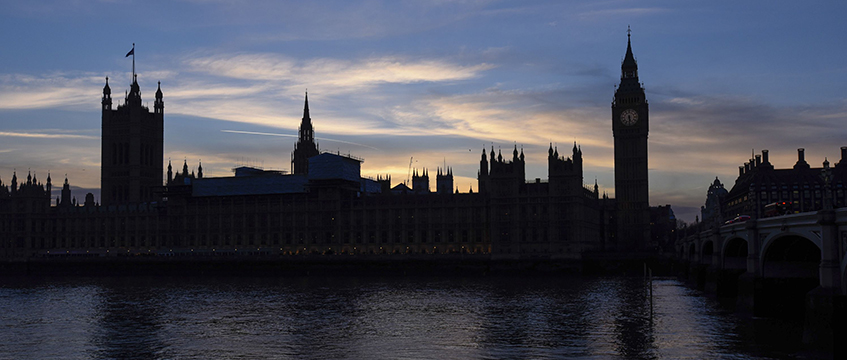The future direction of planning in Westminster
COMMENT: Now the dust has settled over a hard-fought election campaign, the Conservatives at Westminster have a challenging four years ahead that will see some fundamental changes in both planning policies and procedures, writes Will Lingard, senior director, UK development – planning, CBRE
The election context and its influence on future planning policy is interesting. While cynics traditionally expect election promises to fade from the memory, the gains made by Labour, particularly its share of the vote, commits Westminster Conservatives to having a keener eye on the views of its electorate.
Those concerns are many and varied but particularly look towards issues surrounding “hollowed-out London” and depopulated wards, and an electorate feeling marginalised from the planning decision making process.
COMMENT: Now the dust has settled over a hard-fought election campaign, the Conservatives at Westminster have a challenging four years ahead that will see some fundamental changes in both planning policies and procedures, writes Will Lingard, senior director, UK development – planning, CBRE
The election context and its influence on future planning policy is interesting. While cynics traditionally expect election promises to fade from the memory, the gains made by Labour, particularly its share of the vote, commits Westminster Conservatives to having a keener eye on the views of its electorate.
Those concerns are many and varied but particularly look towards issues surrounding “hollowed-out London” and depopulated wards, and an electorate feeling marginalised from the planning decision making process.
To secure meaningful change, Westminster City Council promises to do two things:
Fundamentally review how its members should engage with the development industry and give local residents greater opportunity to express their perspectives on planning proposals
Bring forward a new City Plan that better reflects its changing needs
I have mixed views on the need for the former given that the admittedly generous access that the development industry was given was fundamentally helpful in achieving efficient planning permissions that appreciated the challenges being faced.
Westminster plan will focus on local affordable housing
The reality was that the level of intelligent scrutiny that applications were put under by its planning officers was more often a match for developers straying too far away from Westminster’s policy expectations.
If the former certainty of a reasonably consistent member-led approach to decision making is threatened with much greater public involvement, then the balance of the relationship cannot stray too far the other way either.
Business interests need to retain a healthy say in the planning process and there will be difficult decisions given Westminster’s annual £50 billion+ GVA and the benefits that this brings not just to London but the rest of the UK.
City Plan reinvention
So, in seeking to resolve these often competing interests between development and other stakeholders, the City Council is looking towards what I read between the lines as being an incentivised approach for the development industry.
How can Westminster deliver affordable housing that brings a broader spectrum of Londoners back into the borough but still maintain Westminster as the nation’s commercial heart? A solution to this conundrum I think will be at the heart of the new City Plan when it arrives towards the end of the summer.
So what headlines do I expect from Westminster’s new City Plan (and bear in mind that there will be a substantial period of consultation, debate and redrafting to come)? My top 5 predictions are:
The mixed-use policy is rewritten and the current percentage increase approach is deleted for a method that captures many more planning applications for commercial floorspace that must deliver either residential units on site or make a payment to the affordable housing fund. As a result, the plethora of recent hotel permissions is slowed by subjecting them to the same mixed use/affordable housing expectations as office floorspace.
Placeshaping and good growth will lie at the heart of the policies. There needs to be a pact that demonstrating exceptional design in its widest sense will unlock greater density. Taller buildings and redevelopments of some substance will continue to be more willingly accepted in certain parts of the central activity zone and in the opportunity areas.
Residential gets strong support to help Westminster deliver a challenging GLA set unit target. However, given competing land values and slow residential sales rates, the City Council will be open-minded that affordable housing may have to be negotiated if residential development is to come forward at all. Do not mistake that for them going easy on affordable housing negotiations; quite the opposite, just being practical. There will also be considerable pressure to bring forward their own land which has leaseholder enfranchisement headaches.
Green buildings, green infrastructure and green payments along with technical expectations aimed at securing long term air quality improvements. Perhaps a more forthright approach to securing public realm improvements that create strategic walking routes through the city – try running to work through Westminster at the moment.
Better management of the night time economy and some relaxations on evening entertainment uses as opposed to late-night uses.
Pedestrianisation of Oxford Street
And so to Oxford Street.
It remains to be seen whether the GLA can resurrect pedestrianisation without the support of the City Council. The collective spending on the work to date is “Garden Bridge-esque”. However, in this instance, the key parties are agreed on the eventual goal; the importance of maintaining the pre-eminence of Oxford Street as the nation’s high street.
Looking at the local election results in just the West End Ward, it is understandable why Westminster can no longer support full pedestrianisation. Labour actually gained more votes than the Conservatives here without accounting for the 291 residents who supported the Campaign Against the Pedestrianisation of Oxford Street Party.
If pedestrianisation isn’t to be Oxford Street’s saviour, the City Plan must give retailers and other complementary businesses strong support to lead its reinvention.











